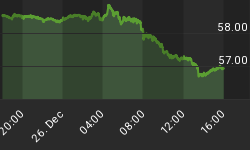Reading about the US dollar has once again brought home to me just how little our economic commentariat understand about the links between exchange rates, money supply and the balance of payments. Even today misconceptions about the balance of payments are still deeply rooted in mercantilist thought. Mercantilists came to theorise that an increased volume of gold would have the effect of stimulating production and increasing national wealth. They therefore concluded that an export surplus would make a country prosperous. They further reasoned that a trade deficit would eventually drain the kingdom of precious metals and thereby impoverish it.
Like so many economic fallacies it did contain a kernel of truth but its main premise was demolished by David Hume who explained in an essay, published in 1752, why it is impossible for a country on a gold standard to lose its stock of gold. The theory is pure monetarism. He rightly pointed out that when a country suffers a gold drain its price level will fall and the price levels of the gold importing countries will rise. Therefore the flow of gold will be reversed by changes in relative price levels until the trade balance is once again restored.
In other words, falling prices in the deficit country raises the value of gold while rising prices in the surplus countries lowers the value of gold. Hume recognised that gold was only a commodity without intrinsic value and therefore was subject to the laws of supply and demand. The astonishing success of the gold standard in stabilising international trade in the nineteenth century (no balance of payments crises for the US and Britain in those days) seemed to more than amply confirm Hume's theory.
Hume's only error was to assume that gold flow movements and thus money supply changes would only occur in prices rather than output and trade. Now the classical school stressed, as did the mercantilists, the role of money in the economy and the means by which economic conditions were transmitted from one country to another. Therefore international considerations strongly influenced monetary policy. This is why central banks used the discount rate to influence gold flows. Nevertheless, the gold standard brought the kind of monetary stability of which we can only dream.
It was observed that changes in exports and imports occurred without changes in the flow of gold. In other words, these changes took place within the gold export and import points. The reason for this is that changes in expenditure quickly reversed the flow of goods. So if a country ran a trade surplus the domestic spending it generated would increase the demand for imports without changing the 'price level'.
The sort of exchange rate problems we now battle are the product of monetary policies that basically assume more is better, more being currency and credit. So when a country expands its money supply -- let us say dollars -- not only is the demand for domestic goods and services increased, so is the demand for imports because the increased stock of money now exceeds the residents' demand to hold money.
This raises the demand for imports causing a current account deficit to emerge. Moreover, foreigners now find themselves in an identical situation. They too now find that the supply of money exceeds their demand to hold it. This excess of They unload these excess dollars by buying imported goods or foreign currencies. This causes more dollars to hit the foreign exchange market thus forcing down the exchange rate.
Naturally a depreciation leads to higher import prices. This in turn misleads many commentators -- especially those paid to know better -- to claim that depreciations are inflationary. This argument was used extensively by Weimar politicians to explain the most devastating inflation ever visited on Germany: it was, according to them, caused by a persistent passive balance of payments. However, it can never be sufficiently stressed that basically it is inflations that cause depreciations, not the reverse. Ludwig von Mises was very clear on this point:
Foreign exchange rates rise because the quantity of the [domestic] money has increased ... The balance of payments doctrine overlooks the fact that the extent of foreign trade depends entirely on prices. It disregards the fact that nothing can be imported or exported if price differences, which make the trade profitable, do not exist. (Ludwig von Mises On the Manipulation of Money and Credit, Free Market Books, 1978, p. 31).
Hence credit expansion raises nominal incomes which sucks in imports causing a deficit on the balance of payments: this in turn results in a loss of foreign reserves as the central bank struggles to maintain an untenable exchange rate. From this it follows that there are only three ways in which balance can be restored: (a) the deficit country must cease credit expansion, (b) other countries must inflate their economies, (c) the deficit country must devalue its currency until the deficit is eliminated.
The exchange rate issue is at heart a comparatively simple on and is based on the laws of supply and demand. Nevertheless, there is still a lot more to be discussed at a later date. But always bear in mind that any commentator who sneers at the nineteenth century gold standard is bound to be totally ignorant about the subject.
















